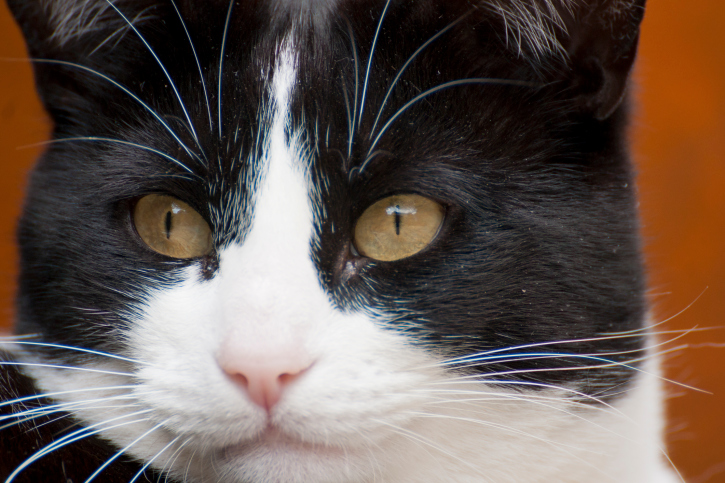If something touches a person’s skin, it is felt. Our skin is a major sensory organ in our bodies. If lightly brushed, the hairs on our arm, for example, might stand up on end and we get a slight sensation because the hair is rooted in the skin.
The whiskers on a cat act in a similar way but are highly sensitive organs, more so than the fur on their bodies. There are numerous nerve endings on the skin at the base of the whiskers. Whiskers are thicker than ordinary hair and more deeply rooted. A cat’s sense of touch is enhanced by long whiskers.
The brain region where information from whiskers is received is similar to the visual cortex. It allows a cat a 3D map of its surroundings without being a true visual sense. It is a sense of touch. Cats depend on their whiskers to give them information on many things, such as balance and precision with their bodies in space. They help a cat know where objects are around them. The whiskers act as a measuring device such as allowing a cat to know if it can fit through a narrow space. The upper and lower whiskers can move independently for greater precision during measurement. They also allow a cat to navigate better in the dark.
Whiskers aid in hunting as they help a cat to detect a preys location. As the air is disturbed by the movement of the prey, a cat’s whiskers help it know in which direction the object has moved. They are part of the reason that cats are such accurate hunters.
Dogs, on the other hand, do not depend on whiskers as much as cats do. They rely more heavily on their senses of sight and smell. Whiskers can help dogs be more aware of an object they are smelling, such as its composition.
So take care when brushing and grooming your cat. Do not trim the whiskers. They are more important than just hair. A cat needs its whiskers to sense and interpret the world around them. Just let those whiskers just tickle your cheeks and let them grow.






Leave a Reply